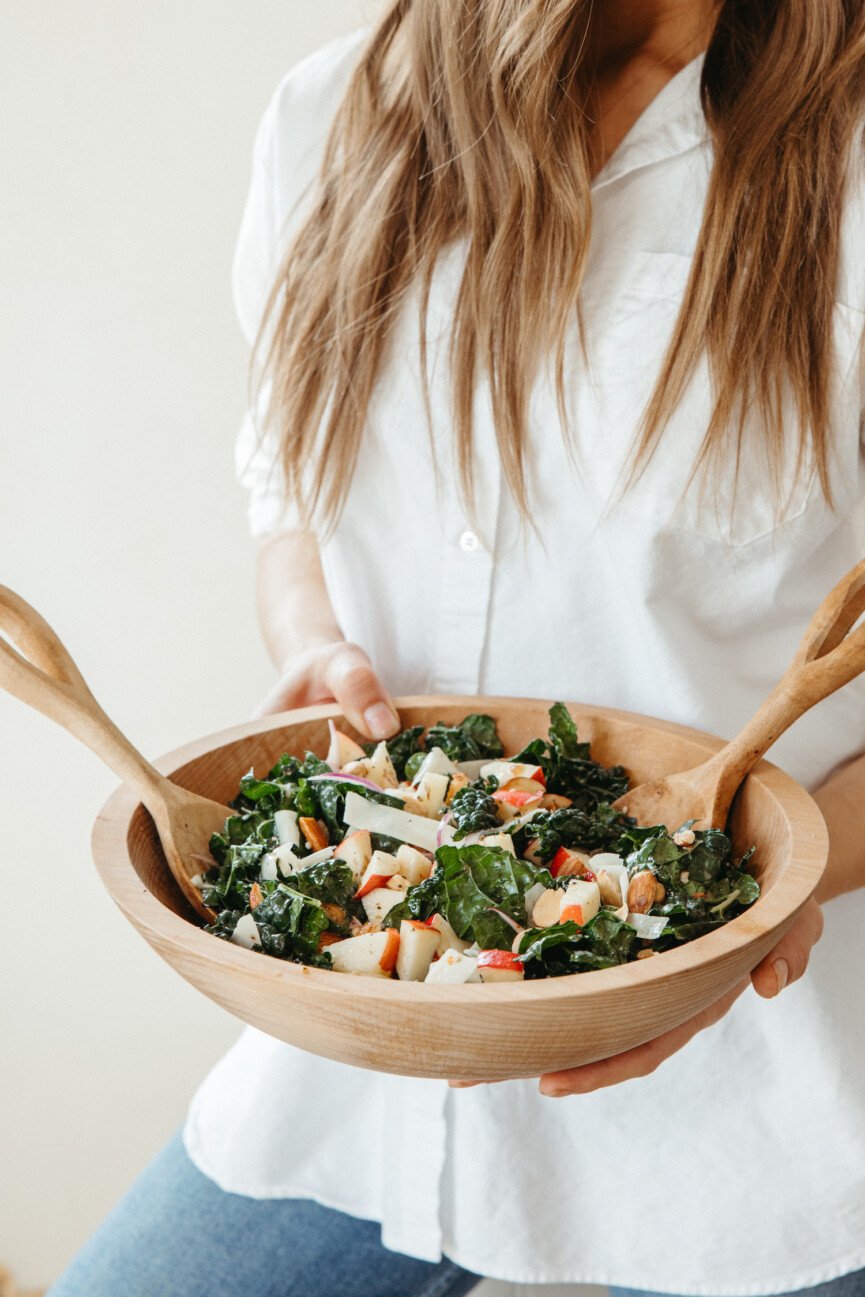Pumpkin spice is the star of the season (Cookies, smoothies, pancakes, you name it!). But spoiler alert: there’s more to October than just flavors in mugs. Introducing colorful autumn foods that will whet your appetite. Often overlooked, fall offers an abundance of seasonal foods that cover multiple bases: supporting hormonal health, satisfying your appetite, and strengthening your digestion. Speaking of digestion, did you know that certain fall foods can deeply nourish your gut? Here are 10 fall fruits and vegetables worth your attention. Strengthen your gut health before winter arrives.
Ayurvedic approach to autumn meals
Do you know Ayurveda? Ayurveda is an ancient Indian healing system. Promote balance in mind, body, and spirit through mindful diet and lifestyle choices. Ayurveda recommends warm, nutritious foods, especially in the fall. These balance the body’s energy and support overall health. Think hearty root vegetables like sweet potatoes and carrots, comforting pumpkin, and warming spices like ginger and cinnamon. These ingredients are rich in essential nutrients (like fiber) and aid in optimal digestion.

Supports digestive fire
Incorporating Ayurveda into your fall diet has two implications. One is to be careful about what you consume. Number 2, how You prepare it. Instead of opting for cold salads and raw foods (which may not be as beneficial during this time), focus on cooked dishes and healing elixirs. These are a beautiful way to warm your body from the inside out and support your digestive fire. This approach strengthens the digestive system, given that cooler weather slows down digestion. Prepare your gut for winter by prioritizing seasonal ingredients and warming meals.
Does the gut microbiome change in autumn?
yes! This is mainly caused by seasonal changes in diet and environmental factors. As the coldest season approaches, most of us change our food choices. Incorporate more grounding produce, nutrient-dense grains, and warming spices. Inevitably, these foods influence the composition of our microbiome. Additionally, changes in weather and sun exposure (through changes in mood and physical activity) affect gut health. Overall, the transition from summer to fall creates a dynamic environment for the gut and highlights the importance of adapting your diet.

How do fall foods boost gut health?
Let’s take a look at how fall foods can improve your gut health, keeping Ayurvedic principles in mind.
fiber
Many autumn foods are rich in dietary fiber. As most of us know, this is very important for digestion. Fiber increases stool volume, promotes regular bowel movements, and prevents constipation. It also helps regulate blood sugar levels and keeps you feeling full. It’s especially advantageous during the delicious fall season!
prebiotics
Prebiotics (found in apples, onions, garlic, etc.) act as nutrients for the beneficial bacteria in your gut. These indigestible fibers encourage the growth of beneficial bacteria such as bifidobacteria and lactic acid bacteria. A thriving microbiome not only helps with digestion, but plays a vital role in your overall health, influencing everything from your mood to your immune function.
probiotics
Probiotics are live beneficial bacteria. It is found in supplements and fermented foods such as yogurt, kefir, and sauerkraut. they work synergistically Contains prebiotics that balance intestinal flora.
synergistic effect
Fiber, prebiotics, and probiotics together form a powerful trio. Supports digestion, reduces bloating, increases nutrient absorption, and promotes a strong immune system. Layering these ingredients into your fall meals will build a strong foundation for optimal gut health.

10 fall foods that are good for your gut health
When it comes to fall foods that promote gut health, the sky’s the limit. From fiber-rich roots to probiotic-packed ferments, include these 10 foods in your weekly meal rotation. These nutritious ingredients will diversify your diet and Promotes digestive health.
1. apple
advantage: Apples are rich in fiber and polyphenols, which are great for gut health. Pectin, a soluble fiber, regulates digestion and promotes a healthy gut microbiome.
How to eat: Enjoy apples raw, slice them into salads, bake them into oatmeal, or use them as a natural sweetener in muffins.
2. Pumpkin
advantage: Packed with fiber, vitamins A and C, and antioxidants, pumpkin improves digestion.
How to eat: Add pumpkin puree to soups or overnight oats, add it to smoothies (frozen), or bake it into bread for a seasonal treat.
3. Sweet potato
advantage: Sweet potatoes are high in fiber and packed with vitamins and antioxidants. They are key to reducing inflammation.
How to eat: Roast, crumble, or combine with dates for a comforting, gut-friendly meal.
4. Brussels sprouts
advantage: These mini cabbages are rich in fiber, vitamins K and C, and beneficial compounds that strengthen your gut health.
How to eat: Saute Brussels sprouts with lemon and cheese or add them to pasta or salads to win the hearts of picky eaters.
5. Pear
advantage: Pears are a great source of fiber and prebiotics, which promote a healthy gut microbiome.
How to eat: Pears can be sliced into salads, layered on flatbreads, used as a filling for cottage cheese, or baked for a simple and fun dessert.
6. Cranberry
advantage: These tangy berries are rich in antioxidants and may prevent urinary tract infections
(Also promotes gut health).
How to eat: Add cranberries to sauces, sprinkle them on salads, or make delicious fall crumbles.
7. Kale
advantage: A nutrient-dense leafy vegetable, kale is rich in fiber, vitamins, and minerals that contribute to gut health.
How to eat: Use kale in salads, or layer this cruciferous vegetable with citrus fruits for a sunshine-inspired snack. Kale is high in fiber, so consider steaming or sautéing it to make it easier to digest.
8. Carrot
advantage: Rich in fiber and beta-carotene, carrots support the intestinal lining.
How to use: We love making this carrot and turmeric hummus, but nothing tastes better than a naturally sweet side dish of caramelized carrots.
9. Beats
advantage: Beets are rich in fiber and antioxidants, which promote a healthy gut environment.
How to use: Roast beets for salads, blend them into smoothies, or make colorful beet hummus.
10. Ginger
advantage: Ginger is a superfood that can be eaten all year round. It is rich in anti-inflammatory properties that help with digestion, immune health, and more.
How to use: Brew ginger tea, add fresh ginger to soups, or use it in baking to add a warm, spicy accent.

Streamline your routine
With fall upon us, there’s no better time to simplify. From your habits to your schedule to your fridge, streamlining your choices will help you focus on what’s on your mind. Really It nourishes us. Of course, it’s a great time to prioritize fall foods for gut health. On the contrary, we feel at our best during the harvest season. To support your digestion, make a comforting soup with fiber-rich root vegetables or brew a cup of masala chai. By carefully selecting and preparing fall-inspired meals, you can foster an active gut microbiome. Cheers to enjoying the upcoming season.










